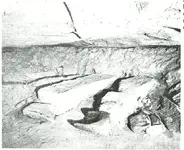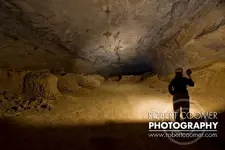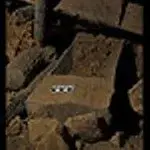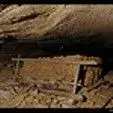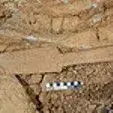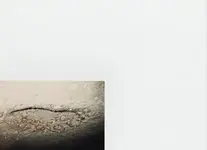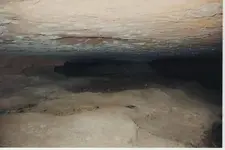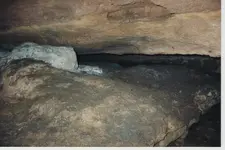You are using an out of date browser. It may not display this or other websites correctly.
You should upgrade or use an alternative browser.
You should upgrade or use an alternative browser.
Metal Detectiing TN. cave / Anybody done this?
- Thread starter Limitool
- Start date
- Joined
- Jun 9, 2013
- Messages
- 6,912
- Reaction score
- 10,584
- Golden Thread
- 0
- Location
- Middle TN. area
- Detector(s) used
- White XLT Spectrum E-Series
- Primary Interest:
- Metal Detecting
- #442
Thread Owner
Clay, Eric and TNmountains.... that's for the input. I had to take off this morning for a doc visit and just got back. So I'll try and look soon at Clays suggested site. Eric if you beat me to it grab some photos and post them... if there're the ones Clays referring too. I'll try shortly... This whole "sediment casts" is still hard to get my head wrapped around because of the location and tight spaces. And then the symbols....? But thanks guys and lets keep thinking and looking. Clay thanks a lot for your effort and time. And TNmountains... anytime you'd like to come let's go caving guy... open invitation partner. Just PM me and we'll talk.
EDITED: Clay beat me to it.... good job Clay. I'm now looking and thinking... THANKS.
EDITED: Clay beat me to it.... good job Clay. I'm now looking and thinking... THANKS.
Last edited:
Good job Eric for lighting a fire under the dr's a..! I would say the good Doctor nailed it on the head! Case closed! Brad you were exactly right when you said the mounds weren't natural, that they were man made. Good job! As far as the lettering and marks on the mound.... Who knows? Maybe the guys working in the cave, marking the mounds that were done? Or someone just writing their initials and doodling? Guess we'll never know. I would still screen the area and see what you can find. Till then bring in the backhoe and remove those mounds! Lol!
Clay
Clay
- Joined
- Jun 9, 2013
- Messages
- 6,912
- Reaction score
- 10,584
- Golden Thread
- 0
- Location
- Middle TN. area
- Detector(s) used
- White XLT Spectrum E-Series
- Primary Interest:
- Metal Detecting
- #444
Thread Owner
"Till then bring in the backhoe and remove those mounds! Lol!"... Thanks Clay. But I'm not ready to actually pull the plug on that or anything yet. (Eric.. be patient with this comment) I have researched for the past 1.5 hrs. and I have to admit it is HARD not to buy into that the mound is not a sediment cast from early 1800's mining for saltpetre ... (not saltpeter but saltpetre) - just learned the verbiage). But damn this area is cramped and it's just hard to get too let alone WORK. I found some other mounds online also. I've also learned vats were "adjusted" to the environment involved. Well this environment really sucked. And some of the mounds (sediment casts) were up against the walls. Some of the vats were very large and some small. I'll try and attach some of the photos I found outside of Clays. Now... here's what still needs explaining folks in no particular order.
1. What are the symbols meaning on the mounds left side and the smaller one on its left side. The small one with the black dot with the North, South, East, West lines from center are hard to explain or understand...? (So says I)
2. When you travel further inward within this cave it gets really hard about 50 - 60 yds. past this etched mound. I mean hard. You have to lie flat in the cold spring water. Water depth is 12-18" for about 30' and your head is up against the ceiling all the while going around a corner. And then there are a couple more mounds.
Now, I'll except maybe the first is a sediment mound from a saltpetre vat... (and that's hard to do) but the 2 way past this is a hard pill to swallow. Anyway thank's Clay and Eric and EVERYBODY. Eric... lets stay on track for now... nothing is going to change in the near future. And I am going to excavate up front and see what's "down there". PLEASE if anyone has any thoughts or can further input what were missing please chime in. I hope the photos work. One is a "vat paddle" to level or shape. Thanks, Brad
1. What are the symbols meaning on the mounds left side and the smaller one on its left side. The small one with the black dot with the North, South, East, West lines from center are hard to explain or understand...? (So says I)
2. When you travel further inward within this cave it gets really hard about 50 - 60 yds. past this etched mound. I mean hard. You have to lie flat in the cold spring water. Water depth is 12-18" for about 30' and your head is up against the ceiling all the while going around a corner. And then there are a couple more mounds.
Now, I'll except maybe the first is a sediment mound from a saltpetre vat... (and that's hard to do) but the 2 way past this is a hard pill to swallow. Anyway thank's Clay and Eric and EVERYBODY. Eric... lets stay on track for now... nothing is going to change in the near future. And I am going to excavate up front and see what's "down there". PLEASE if anyone has any thoughts or can further input what were missing please chime in. I hope the photos work. One is a "vat paddle" to level or shape. Thanks, Brad
Attachments
Saltpeter, Saltpetre, either way. Depends on what part of the country your from. Actually my phone says the correct spell is Saltpeter and its not even from this country. Lol! Anyways I'm guessing it doesn't matter how much room they had, what mattered to them was they needed it. So whether they had a lot of room or a little, they went in and got what they needed. Now if only we could time travel and see them in progress.
- Joined
- Jun 9, 2013
- Messages
- 6,912
- Reaction score
- 10,584
- Golden Thread
- 0
- Location
- Middle TN. area
- Detector(s) used
- White XLT Spectrum E-Series
- Primary Interest:
- Metal Detecting
- #446
Thread Owner
Saltpeter, Saltpetre, either way. Depends on what part of the country your from. Actually my phone says the correct spell is Saltpeter and its not even from this country. Lol! Anyways I'm guessing it doesn't matter how much room they had, what mattered to them was they needed it. So whether they had a lot of room or a little, they went in and got what they needed. Now if only we could time travel and see them in progress.
Boy or boy Clay... what I wouldn't give to "time travel" and see that. Especially with the light they didn't have. There was evidence of fire back where this etched mound is at... but way back deeper
 If I go back again to this area (probably will) I'll look very closely for evidence. But how they carried candles or torches into this area I'D REALLY LIKE TO KNOW!!!!! For somebody to go back that far under the conditions I have to today using candles or torches then... I'd have to say they had some nuggets... BIG ONES. I just can't understand how they got anything that far back in and back out again dry. I'm 90% underwater both ways (today). Maybe the environment was different 200 or so years ago. But it's still real cool finding this stuff... and some has not yet been explained or understood yet... maybe never
If I go back again to this area (probably will) I'll look very closely for evidence. But how they carried candles or torches into this area I'D REALLY LIKE TO KNOW!!!!! For somebody to go back that far under the conditions I have to today using candles or torches then... I'd have to say they had some nuggets... BIG ONES. I just can't understand how they got anything that far back in and back out again dry. I'm 90% underwater both ways (today). Maybe the environment was different 200 or so years ago. But it's still real cool finding this stuff... and some has not yet been explained or understood yet... maybe never ?
?Boy or boy Clay... what I wouldn't give to "time travel" and see that. Especially with the light they didn't have. There was evidence of fire back where this etched mound is at... but way back deeperIf I go back again to this area (probably will) I'll look very closely for evidence. But how they carried candles or torches into this area I'D REALLY LIKE TO KNOW!!!!! For somebody to go back that far under the conditions I have to today using candles or torches then... I'd have to say they had some nuggets... BIG ONES. I just can't understand how they got anything that far back in and back out again dry. I'm 90% underwater both ways (today). Maybe the environment was different 200 or so years ago. But it's still real cool finding this stuff... and some has not yet been explained or understood yet... maybe never
?
Yes a time machine would be awesome! You'd have to be invisible though so you don't wind up changing history or get getting shot and killed.
OK so they probably used the same thing miners used. Candles. Carbide lamps weren't patented in the states until 1900. Black ceiling. Did they use torches for more light? Or did they just make like a campfire for light. Hopefully they had enough ventilation. Answers anyone? Anyone? Going once. Going twice. Anyone?
- Joined
- Jun 9, 2013
- Messages
- 6,912
- Reaction score
- 10,584
- Golden Thread
- 0
- Location
- Middle TN. area
- Detector(s) used
- White XLT Spectrum E-Series
- Primary Interest:
- Metal Detecting
- #448
Thread Owner
Anyone to Clay... Come in Clay... Anyone here... HELLO!!!!! I'm thinking torches for the most part. This would explain (I think) the small round holes I see in the ceiling as you go back into cave. Here's 3 photos within the first 50 yards of some "circular indications" in ceiling. I've always wondered how they got there or why there're there. And maybe these aren't from torches...? I'm still having a hard time buying into the sediment casts scenario. Wouldn't there be a lot of them? Every photo I found of them there were numerous ones around.
Attachments
Spectre
Jr. Member
Candles were much more common then torches. Any light is better then pitch black when your're in total darkness. The major threat, is from thermal fracturing which was a known threat in those days. If you apply to much heat to the rock above you in a cave, you run the risk of having the cave roof collapse, so you wanted as little heat with as much light as possible. It's better to have a little light and no risk of collapse, then alot of light with alot of risk of collapse. Imho.
Also, fire doesn't really burn through rock, it would just fracture it. Then you're just asking to have the roof collapse on you.
Keep what I mentioned to you in pm to yourself til we get a chance to possibly discuss it further.
Also, fire doesn't really burn through rock, it would just fracture it. Then you're just asking to have the roof collapse on you.
Keep what I mentioned to you in pm to yourself til we get a chance to possibly discuss it further.

Last edited:
Anyone to Clay... Come in Clay... Anyone here... HELLO!!!!! I'm thinking torches for the most part. This would explain (I think) the small round holes I see in the ceiling as you go back into cave. Here's 3 photos within the first 50 yards of some "circular indications" in ceiling. I've always wondered how they got there or why there're there. And maybe these aren't from torches...? I'm still having a hard time buying into the sediment casts scenario. Wouldn't there be a lot of them? Every photo I found of them there were numerous ones around.
I'm here. I was thinking candles. Is there small holes in the walls where they would stick the candle holder? Then again you said the ceiling is black so they had to use torches. Like Spectre said it could fracture the ceiling. Yes it could but it's probably rare that it does. I've seen a lot of black ceilings from Indians and the ceilings are still intact. Out here its mostly rock shelters that the ancient Indians used. I'd hate to be in one of those when it fractures and have a 10 ton boulder crush you. Rocks do not burn unless your talking coal mines, copper mines, ext. We had a copper mine here that caught on fire back in 1894 and they didn't get it put out till 1916.
Brad, just let me know if I'm getting off course.
They tore down the smelter and other buildings and rebuilt them in the valley below, creating another town. Then they went to work strip mining the mountain to put the fire out.
?? Off course? Ok , sorry, wrong turn. OK so while your trying to wrap your head around the answer to your mounds you should start screening and see what the Indians, workers and other people left behind.
Clay
- Joined
- Jun 9, 2013
- Messages
- 6,912
- Reaction score
- 10,584
- Golden Thread
- 0
- Location
- Middle TN. area
- Detector(s) used
- White XLT Spectrum E-Series
- Primary Interest:
- Metal Detecting
- #451
Thread Owner
Candles were much more common then torches. Any light is better then pitch black when your're in total darkness. The major threat, is from thermal fracturing which was a known threat in those days. If you apply to much heat to the rock above you in a cave, you run the risk of having the cave roof collapse, so you wanted as little heat with as much light as possible. It's better to have a little light and no risk of collapse, then alot of light with alot of risk of collapse. Imho.
Also, fire doesn't really burn through rock, it would just fracture it. Then you're just asking to have the roof collapse on you.
Thanks for info /concern Spectre ... Now this is NOT what any cave diver wants to hear... but... The roof does not appear to be "solid rock" as the bottom. I say this because even as an amateur... I see "not" all SOLID ROCK... above me. I see solid rock below me in spring bed... because the constant spring running through cave "hit it" and has continued to carve deeper for many, many years. So... are the pics I posted from torches placed for a long period of time...I admit I have no idea. I'll PM soon.... Brad
- Joined
- Jun 9, 2013
- Messages
- 6,912
- Reaction score
- 10,584
- Golden Thread
- 0
- Location
- Middle TN. area
- Detector(s) used
- White XLT Spectrum E-Series
- Primary Interest:
- Metal Detecting
- #452
Thread Owner
Clay... "Then again you said the ceiling is black"... Now I did say I thought there was evidence of fire but never said the ceiling was "black". Now up by the entrance there is a LARGE deep circular indentation on the ceiling (5-6' feet wide x 3-4" deep). And the other photos I've posted ... I can't say that either. NOW... I've found black debris on the cave floor that I think are from LONG AGO FIRES or torches but none on the ceiling yet.
And boy Clay are you right... "start sifting and see what I find up front"... I truly wish you were here to help... Thank you Clay for all your help and interest.... (I do appreciate it all) Later, Brad.
And boy Clay are you right... "start sifting and see what I find up front"... I truly wish you were here to help... Thank you Clay for all your help and interest.... (I do appreciate it all) Later, Brad.
Clay... "Then again you said the ceiling is black"... Now I did say I thought there was evidence of fire but never said the ceiling was "black". Now up by the entrance there is a LARGE deep circular indentation on the ceiling (5-6' feet wide x 3-4" deep). And the other photos I've posted ... I can't say that either. NOW... I've found black debris on the cave floor that I think are from LONG AGO FIRES or torches but none on the ceiling yet.
And boy Clay are you right... "start sifting and see what I find up front"... I truly wish you were here to help... Thank you Clay for all your help and interest.... (I do appreciate it all) Later, Brad.
OK by evidence I thought you meant it was black, soot or ash making it black. I stand corrected. Yes you never know what your going to find. I wish I was there to help too.
Your welcome! Anything I can do to help I will.
Clay
- Joined
- Jun 9, 2013
- Messages
- 6,912
- Reaction score
- 10,584
- Golden Thread
- 0
- Location
- Middle TN. area
- Detector(s) used
- White XLT Spectrum E-Series
- Primary Interest:
- Metal Detecting
- #454
Thread Owner
Clay... the "fire evidence" up front by entrance is me saying.... there is a 5 - 6 foot circle "burned" into the ceiling. Now you'd think there'd be black soot. And there would be if it was recent. But there is absolutely NONE (and/or it's very faint). This makes me think this was done a LONG TIME AGO. So where is the soot if this is right...? The outside hot air hitting the cold air exiting the cave create a very high humidity level and maybe with all the water on ceiling the soot has been "washed away"... just guessing though. I know it would take a LONG TIME...?
ANYONE..... The only way you can "touch" the etched mound is to lie on your stomach... how would anyone fill a vat if this mound was a sediment cast? There's only a few inches between the mound and the ceiling.
ANYONE..... The only way you can "touch" the etched mound is to lie on your stomach... how would anyone fill a vat if this mound was a sediment cast? There's only a few inches between the mound and the ceiling.
Spectre
Jr. Member
Mound and ceiling(current) or ceiling and bedrock at the mound? With water running through the cave there has absolutely been some mud settling near or in front of the mound. One of my first inclininations is to always attempt to visualize how the area looked in the past, not the present. The same is done with relic hunting, once you've gone over an area you can somewhat see how the area was most likely laid out at the time those items were dropped. Items in the ground really don't shift around much once dropped (unless we're talking heavily plowed fields, and the like, ofc).
Speaking of 'black caves', there was an old silver mine I visited (ok...snuck into, shhhh) in California at a popular 'old west town' park. Throughout the entire mine all of the walls and ceiling had been coated in soot. So much so, miners had to literally hold torches to them to form this thick coating. This was done (as far as I know) that there was no fresh digging in that area and wasn't where they should be focusing. This 'mine' was also very shallow from ground level and 90% dirt, not stoney like we see in this cave, so it was miles safer to do it in this environment.
Even dirt, when heated, can dry out/fracture (think, old clay) which can weaken the support of the tons of stone above. At the mouth of a cave, seeing 'some' soot is normal. Smoke doesn't blow in one direction 100% of the time, so there will always be a little in that area if they were in and out of the cave mouth, either working in it or using it as a hideout. They wouldn't be sitting outside the cave mouth if it was raining/snowing either, which can be pretty rough on your only source of heat.
Speaking of 'black caves', there was an old silver mine I visited (ok...snuck into, shhhh) in California at a popular 'old west town' park. Throughout the entire mine all of the walls and ceiling had been coated in soot. So much so, miners had to literally hold torches to them to form this thick coating. This was done (as far as I know) that there was no fresh digging in that area and wasn't where they should be focusing. This 'mine' was also very shallow from ground level and 90% dirt, not stoney like we see in this cave, so it was miles safer to do it in this environment.
Even dirt, when heated, can dry out/fracture (think, old clay) which can weaken the support of the tons of stone above. At the mouth of a cave, seeing 'some' soot is normal. Smoke doesn't blow in one direction 100% of the time, so there will always be a little in that area if they were in and out of the cave mouth, either working in it or using it as a hideout. They wouldn't be sitting outside the cave mouth if it was raining/snowing either, which can be pretty rough on your only source of heat.
Mound and ceiling(current) or ceiling and bedrock at the mound? With water running through the cave there has absolutely been some mud settling near or in front of the mound. One of my first inclininations is to always attempt to visualize how the area looked in the past, not the present. The same is done with relic hunting, once you've gone over an area you can somewhat see how the area was most likely laid out at the time those items were dropped. Items in the ground really don't shift around much once dropped (unless we're talking heavily plowed fields, and the like, ofc).
Speaking of 'black caves', there was an old silver mine I visited (ok...snuck into, shhhh) in California at a popular 'old west town' park. Throughout the entire mine all of the walls and ceiling had been coated in soot. So much so, miners had to literally hold torches to them to form this thick coating. This was done (as far as I know) that there was no fresh digging in that area and wasn't where they should be focusing. This 'mine' was also very shallow from ground level and 90% dirt, not stoney like we see in this cave, so it was miles safer to do it in this environment.
Even dirt, when heated, can dry out/fracture (think, old clay) which can weaken the support of the tons of stone above. At the mouth of a cave, seeing 'some' soot is normal. Smoke doesn't blow in one direction 100% of the time, so there will always be a little in that area if they were in and out of the cave mouth, either working in it or using it as a hideout. They wouldn't be sitting outside the cave mouth if it was raining/snowing either, which can be pretty rough on your only source of heat.
Think old clay?? Hey I'm not that old! Brad's older that I am and I'm sure not as old as dirt! Lol!
Spectre
Jr. Member
I was refering to phyllosilicate minerals containing variable amounts of water trapped in the mineral structure. =/
Of course wiki is always a gem, something else to think about, Brad. Clay, being relatively impermeable to water, is also used where natural seals are needed.
Of course wiki is always a gem, something else to think about, Brad. Clay, being relatively impermeable to water, is also used where natural seals are needed.
dave sharky
Jr. Member
- Joined
- Aug 27, 2013
- Messages
- 49
- Reaction score
- 11
- Golden Thread
- 0
- Primary Interest:
- All Treasure Hunting
limitool try using a light stick and you can buy a makro jeotech deep seeking it for 1.200 on ebay it will show you voids graves gold great pic did you think you would get any thing funny friend you will lose the cave all so trust no one i let a guy use my detector he let me hold a platinum bar like 12 in by 8in by 1or two inch thick i got nothing live and lean i loved your pic.
Spectre
Jr. Member
You're first mistake was believing someone would let you hold on to a platinum bar, the other is the belief of makro jeotech machines. Aren't those one of the companies that claim to be able to detect from great distances? Those are always comical, sadly some people waste their money on them. Long-range detecting...goodluck with that.
This post might come across pretty crass and totally off topic. I can't help but make that reply in this case however.
This post might come across pretty crass and totally off topic. I can't help but make that reply in this case however.
Similar threads
- Replies
- 25
- Views
- 2K
Users who are viewing this thread
Total: 1 (members: 0, guests: 1)

